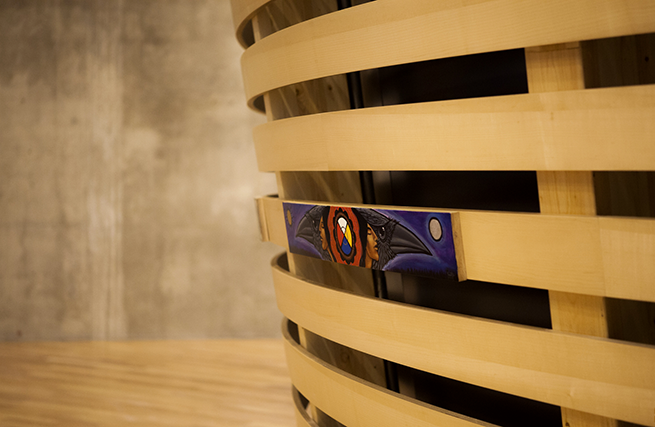
Photo: Aaron Cohen/CMHR
On September 20 the Canadian Museum for Human Rights (CMHR) kicked off their opening with RightsFest – a multi-stage, 2-day festival that included Indigenous superstar Buffy Sainte-Marie, among other Indigenous artists. A Tribe Called Red (ATCR) was slated to perform, but days before the festival they decided to bow out, releasing this statement:
Human rights are great for society. We appreciate the work the museum has been doing to bring attention to global issues. Unfortunately, we feel it was necessary to cancel our performance because of the museum’s misrepresentation and downplay of the genocide that was experienced by Indigenous people in Canada by refusing to name it genocide. Until this is rectified, we’ll support the museum from a distance.
Does the CMHR acknowledge the forced residential school system and other oppresive policies of the Canadian government as genocide? According to ATCR and various critics, including several mainstream journalists, it does not. However, Rhea Yates—Media Relations Advisor for CMHR—insists that the museum does in fact include “genocide” as terminology in the exhibit on residential schools, via a Toronto Star article from 2013, written by Phil Fontaine. Yates says that the exhibit on residential schools includes many documents, as well as video testimony from participants of the Truth and Reconciliation Commission. Why then are some members of the First Nations community responding so negatively?
While it is important that the conversation around genocide in Canada is taking place, another critical aspect is the all too familiar dynamic of a lack of Indigenous representation and inclusion. A media release from the Museum states that an advisory committee consisting of human rights experts from across Canada, including experts on Indigenous rights, were engaged in the initial planning stages. According to Yates, the museum had one Métis curator, along with other Indigenous “experts” and artists consulting for all Indigenous content. Consultation, however does not necessarily ensure that Indigenous voices will be heard.


The relationship between museums and Indigenous people carries a great deal of baggage. Non-Indigenous researchers have historically descended upon Indigenous communities seeking to document their knowledge and experience. They are then deemed “experts” and proceed to create Eurocentric narratives about Indigenous people and culture. While this might not exactly be the case with CMHR, it could be that something similar took place. The reaction from ATCR and others in the Indigenous community point to a disconnect in the museum’s representation of Indigenous experience in Canada. With so many Indigenous scholars, researchers, and survivors—all of whom are experts—who could have been employed to curate these galleries, it seems the CMHR missed an opportunity to include meaningful perspectives about Indigenous people by Indigenous people.


In a release following ATCR’s cancellation, the museum stated, “We know that building dialogue and earning trust is a long-term process, and we hope this will again be an opportunity for respectful conversation on issues that historically haven’t been easy to talk about.”
Renowned Indigenous visual artist Rebecca Belmore has an installation in the museum entitled Trace. Trace is an interactive piece, which put a call out to the general public to participate in the making of hand-printed beads made from clay. The clay was taken from the Red River, and the beads will be woven together to form a blanket.


As Belmore’s installation suggests, all Canadians should interact with Indigenous narratives, which can often mean having to dig deeply and possibly get uncomfortable. This engagement could lead to deeper knowledge and empathy about the relationship between Indigenous people and human rights in Canada, as well as prevent future oppressive policies and legislation from being implemented. The most effective way of ensuring trust and meaningful dialogue in any narrative on Indigenous communities, is to centre Indigenous people as creators and curators.
The Canadian Museum for Human Rights (CMHR), opened its doors to the public on September 27, 2014 for guided tours.










